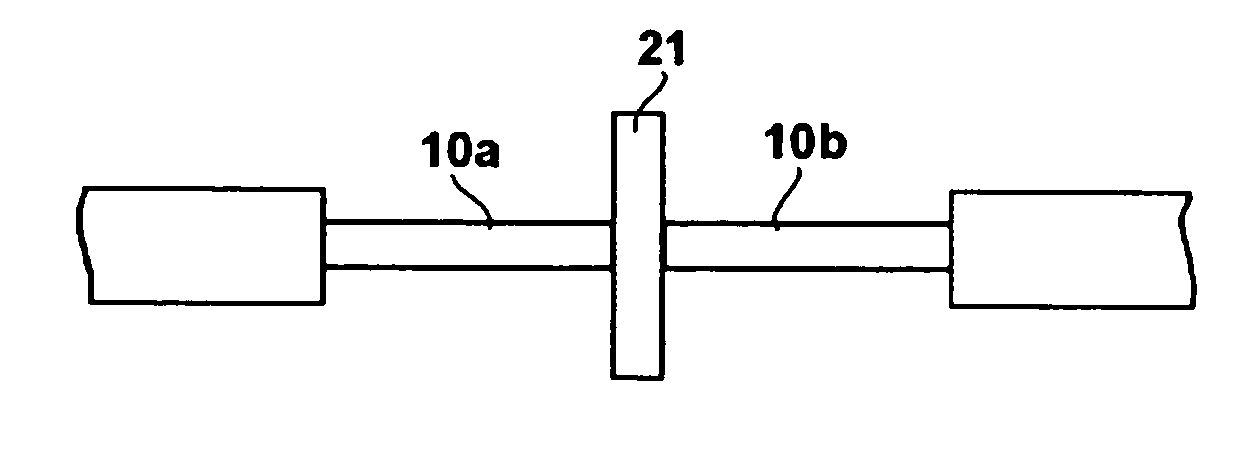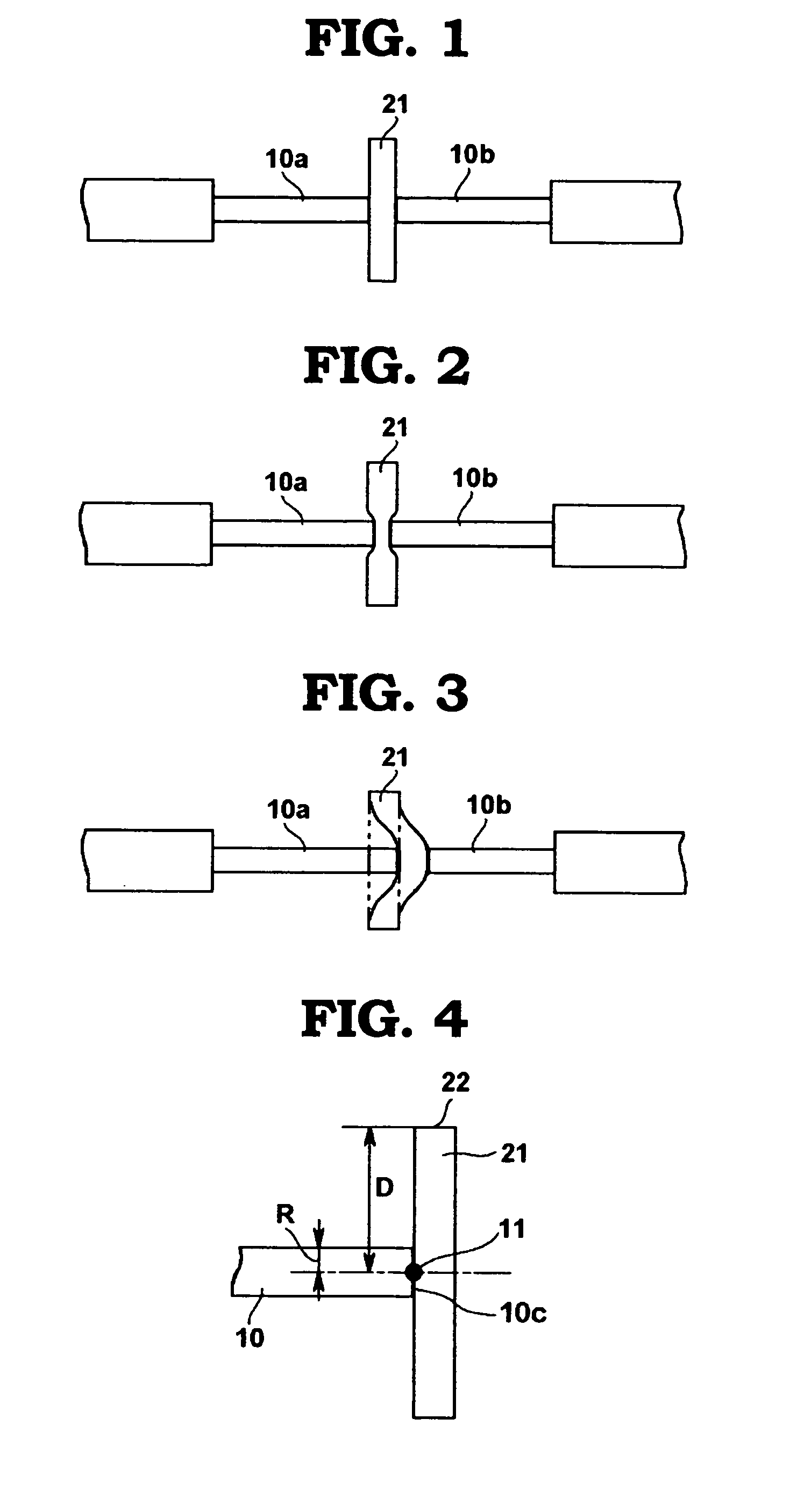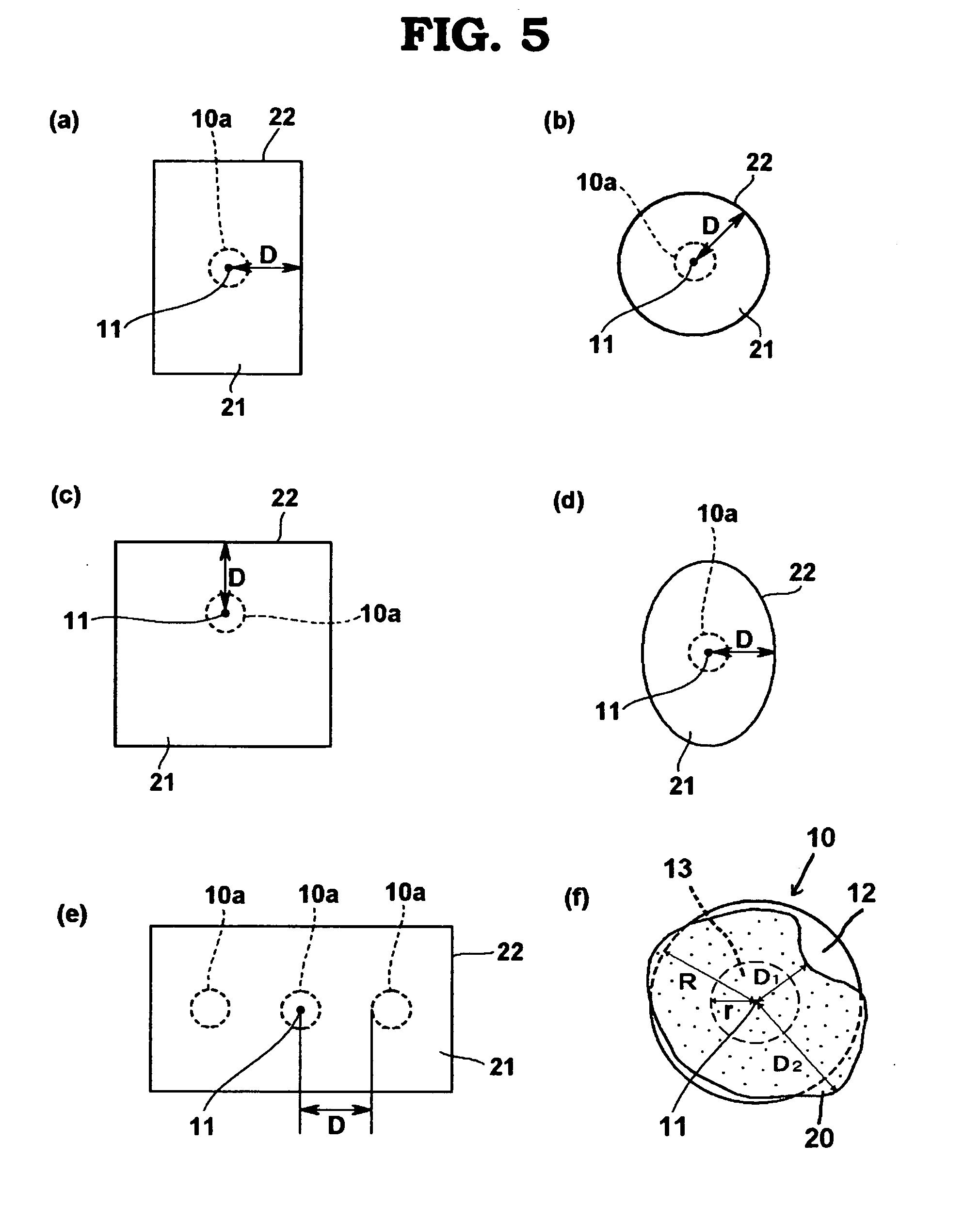Optical connection structure and optical connection method
a technology of optical connection and optical fiber, applied in the field of optical connection structure, can solve the problems of increased connection loss, brittleness and weakness of optical fiber, and a large amount of time and cost for grinding, and achieves the effect of improving the ease of handling, no negative effects, and simple overall structur
- Summary
- Abstract
- Description
- Claims
- Application Information
AI Technical Summary
Benefits of technology
Problems solved by technology
Method used
Image
Examples
example 1
[0150] Using sheet-shaped viscous connection member (1) obtained above, an optical connection structure was formed as shown in FIG. 33. First, the V-groove cross-sections of two V-grooved alignment members 43a, 43b (5 mm×10 mm in size) were positioned using an optical microscope. Then, the ends of V-grooves were aligned at a position 0.2 mm from a 0.05-mm slit 801 provided in a glass board 80, and the alignment members were affixed on the glass board 80 using adhesive. Thereafter, the above sheet-shaped viscous connection member 21 was inserted into the slit in the glass board and placed vertically to the surface of the glass board. Then, optical fibers 10a, 10b were placed inside the V-grooves in both alignment members 43a, 43b. Optical fibers were quartz optical fibers (single-mode fiber of 250 μm in diameter, manufactured by Furukawa Electric), each of which had been stripped by 25 mm from the end using a fiber stripper to expose the optical fiber element wire, which had then bee...
example 2
[0153] Using sheet-shaped viscous connection member (2) obtained above, an optical connection structure was formed in the same manner as in Example 1. When the connection loss of the connected optical fibers was measured, the reading was 0.4 dB or below, indicating good optical characteristics. In addition, a heat resistance test (in conformance with JIS C 0021) was conducted with the optical connection structure left standing in an environment of 125±2° C., along with a temperature cycle test for 500 cycles in a temperature range of −40° C. to 75° C. As a result, the changes in optical transmission loss were 0.4 dB or below. When the viscous connection member was observed after removing the optical connection, no solidification or yellowing was found, showing that the optical connection component was sufficiently reusable.
example 3
[0154]FIG. 34 is a plan view showing an optical connection structure that connects four-core optical fiber tapes. To achieve optical connection of four optical fibers on each side, connection operation was performed in the same manner as in Example 1, except that two four-core optical fiber tapes 15a (this fiber tape contains optical fibers 101-104), 15b and two V-grooved alignment members 43a, 43b affixed on a glass board 80 were used. As a result, four optical fibers could be easily connected optically using one sheet-shaped viscous connection member 21. When the lengths of cut optical fibers were measured, there was a variation of approx. ±10 μm among the four optical fiber element wires. Since the sheet-shaped viscous connection member deformed flexibly to adhere to and affix each optical fiber, however, the variation in optical transmission loss among the optical fiber element wires was small. Specifically, the changes in optical transmission loss over 100 detachment / reattachme...
PUM
 Login to View More
Login to View More Abstract
Description
Claims
Application Information
 Login to View More
Login to View More - R&D
- Intellectual Property
- Life Sciences
- Materials
- Tech Scout
- Unparalleled Data Quality
- Higher Quality Content
- 60% Fewer Hallucinations
Browse by: Latest US Patents, China's latest patents, Technical Efficacy Thesaurus, Application Domain, Technology Topic, Popular Technical Reports.
© 2025 PatSnap. All rights reserved.Legal|Privacy policy|Modern Slavery Act Transparency Statement|Sitemap|About US| Contact US: help@patsnap.com



